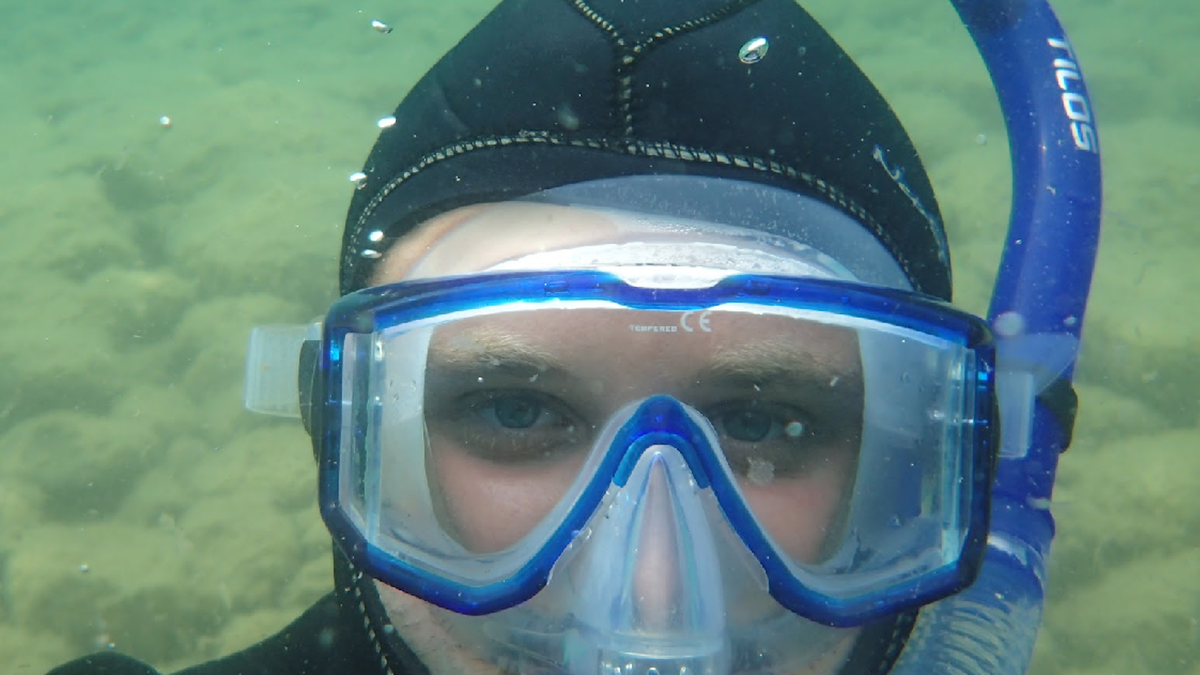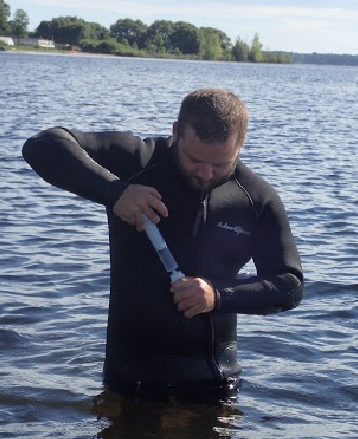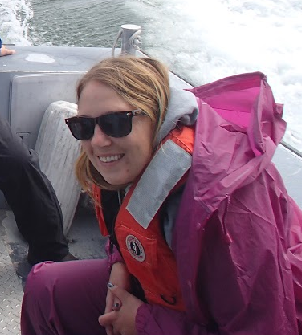The scientists and staff of UMD's Large Lakes Observatory (LLO) invite the community to board and tour the Blue Heron research vessel on Friday, June 29, in the Twin Ports Harbor near the Great Lakes Aquarium, 353 Harbor Drive. The LLO Science on Deck event is free and will take place from 12 noon-4 pm. The public will have the opportunity to hear a presentation about fresh water research at 3:15 p.m. and meet some graduate students who are conducting research.
Andrew Camilleri and Kait Reinl are two students studying water resources sciences who will be at the Science on Deck event. These students have been collecting data from the Great Lakes, analyzing and applying the data to their research projects.
Andrew Camilleri
Andrew, an MS candidate for Water Resources Science on the Limnology and Oceanography track, is planning on graduating in August 2018. He is researching the nutrient limitation of benthic algae in the upper Great Lakes with Ted Ozersky, assistant professor of biology.
Benthic algae comes from the bottom of a body of water, and it is important for two reasons.
First, the algae is at the base of the nearshore food web which supports other organisms higher on the food chain.
Secondly, an increase in the inputs of nutrients into the Great Lakes can lead to excessive algae growth, or benthic algae blooms, that are a major threat to nearshore areas surrounding the lakes.
Andrew is determining how different environmental factors can affect how benthic algae respond to different nutrients, such as nitrogen or phosphorus, which can promote or inhibit the growth of benthic algae.
Last summer, Andrew and Ted conducted dozens of experiments across Lake Michigan, the Green Bay area, and the north and south shore of Lake Superior to measure the response of benthic algae to nitrogen and phosphorus.
By conducting experiments in a variety of locations, they were able to determine a variety of environmental factors that were affecting how benthic algae responds to different nutrients. Their results found that both nitrogen and phosphorus are important in limiting nutrients in the Great Lakes, and also that nitrogen may be more important than previously thought for limiting benthic algae. They also found that sites that had more nutrients were less limited in growth.
Kaitlin Reinl
Kaitlin, or Kait, is a Ph.D. student for Water Resources Science. She is in her second year and is planning to graduate in spring 2020. Working with Bob Sterner, director of the Large Lakes Observatory, she is trying to determine what causes cyanobacteria blooms, that are visible as the gross green scum that can appear in lakes. The cyanobacteria in algal blooms can become toxic and can decelerate other growth in the water by blocking sunlight. They typically appear in agricultural or urbanized areas. Lake Superior doesn’t have either of those conditions yet, and Kait looking deeper into the reasons why.
“We have a pretty unique opportunity because everyone else has been having these issues in the other Great Lakes. We can mitigate them from getting really bad, really fast,” Kait says.
This summer, Kait is doing her own fieldwork to determine the specific areas and the different environmental factors that are allowing the algal blooms to grow.
She will collect samples from rivers from several locations at the beginning, mid, and late summer. From her research, she hopes to be able to create computer models that can be used as a predictive tool for when these blooms will appear.
Science Comes Alive: June 29
Every summer, the Large Lakes Observatory hosts Science On Deck events for the public. The 2018 dates are on June 29 and July 20. This is an opportunity to learn about the Large Lakes Observatory, the Research Vessel Blue Heron, and the research being done by scientists, such as Andrew and Kait.
During Science On Deck, the ship ties up near the Great Lakes Aquarium and welcomes the public aboard from noon to 4 pm. Tours are provided by scientists, crew, and students to provide an overview of the Blue Heron Research Vessel's layout and research capabilities. A variety of scientists prepare and present results of large lakes studies under a canopy on deck at each event, too. Each scientist answers questions on a related topic and shares photos, graphs, equipment, and samples.
Groups interested in participating in Science On Deck should contact Lisa Sundberg at 218-726-8683 or [email protected].
The Blue Heron is part of the University National Oceanographic Laboratory System (UNOLS), and is chartered by research scientists to explore any of the Great Lakes. These tours are offered on a monthly basis during the sailing season (about five times a year). LLO started hosting the program in the spring of 2013.
Student Researchers
Andrew Camilleri and Kaitlin Reinl are two of 15 graduate students working on research projects throughout the summer and fall of 2018. The graduate students are Jake Callaghan, Clay Carufel, Ellen Cooney, Andrew Dennisen, Mojtaba Fakharee, Jennifer Knack, Taeho Lim, Kirsten Rhude, Maeve Ryan, Gage Sachs, Kirill Shchapov, Kathryn Vall, and Zachary Wagner.
The Large Lakes Observatory (LLO) offers a variety of masters and Ph.D. programs in water resources science, integrated biosciences, chemistry, geology, and physics. LLO graduate students have the opportunity to take unique courses and study great lakes around the world. The programs provide foundational skills and prepares students to perform their own research.


